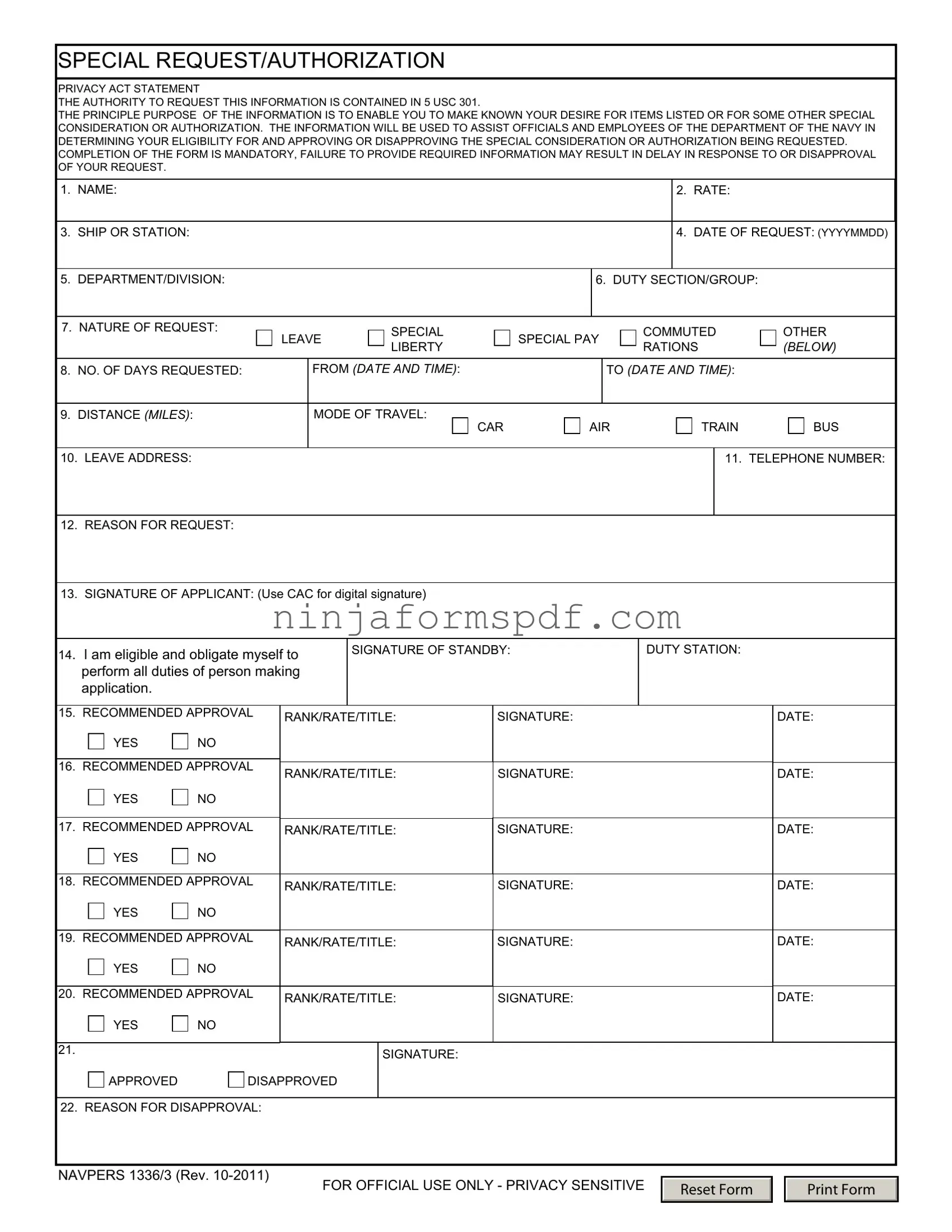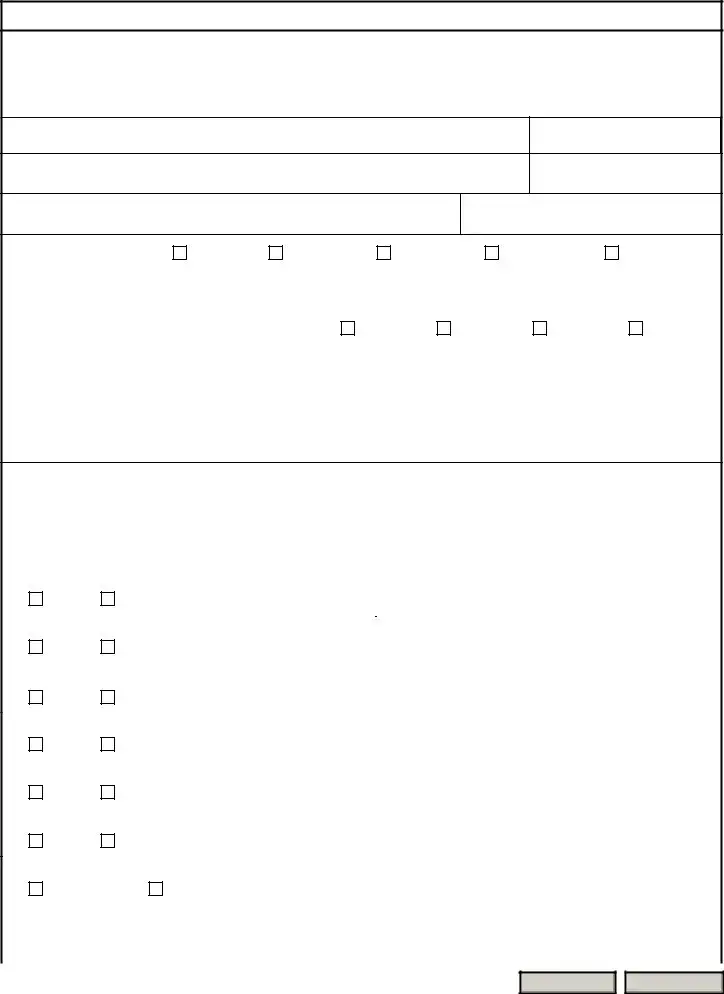What is the NAVPERS 1336/3 form used for?
The NAVPERS 1336/3 form, also known as the Special Request/Authorization form, is used by Navy personnel to request various types of special considerations or authorizations. These might include requests for leave, special liberty, special pay, commuted rations, or other specific needs. It serves as a formal way to communicate and record these requests within the Department of the Navy.
Who needs to fill out the NAVPERS 1336/3 form?
This form must be completed by any Navy personnel who seek approval for special consideration or authorization as outlined above. It's a mandatory step for requesting certain adjustments or benefits related to their service.
What information is required on the NAVPERS 1336/3 form?
The form requires the requester's name, rate, ship or station, department/division, duty section/group, and details of the request such as the nature of the special request, number of days requested, leave address, telephone number, and the reason for the request. It also requires signatures for the application's processing and for standby duty acknowledgment, if applicable.
Is filling out the NAVPERS 1336/3 form mandatory?
Yes, completion of the NAVPERS 1336/3 form is mandatory for Navy personnel who wish to request special considerations or authorizations. Failure to complete the form may result in delays or disapproval of the request.
What happens if the NAVPERS 1336/3 form is not completed correctly?
If the form is not completed correctly or is missing information, it can lead to delays in processing the request. Incomplete or incorrect forms may also be returned to the requester for correction, further delaying approval.
How is the NAVPERS 1336/3 form processed?
Once completed, the form is submitted through the requester's chain of command for review and approval. Each level of command has the opportunity to recommend approval or disapproval, with the final decision being recorded at the end of the form.
Can the NAVPERS 1336/3 form be submitted digitally?
Yes, the form can be signed digitally using a Common Access Card (CAC) for the applicant's signature. How it's submitted after signing depends on the specific procedures of the requester's unit or command.
What should be done if a NAVPERS 1336/3 request is disapproved?
If a request made via the NAVPERS 1336/3 form is disapproved, the individual can consult their chain of command for feedback on the reason for disapproval. Understanding the reasons can help address any issues before resubmitting the request or making an alternative plan.
Where can one find the NAVPERS 1336/3 form?
The NAVPERS 1336/3 form can be obtained through the Department of the Navy's official forms website or through an individual's command administrative office. It is important to ensure the most current version of the form is used.

